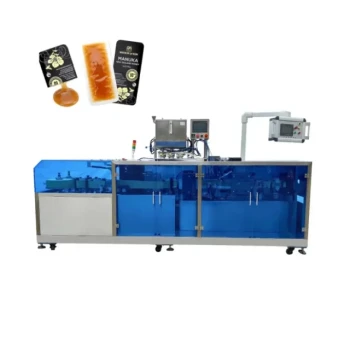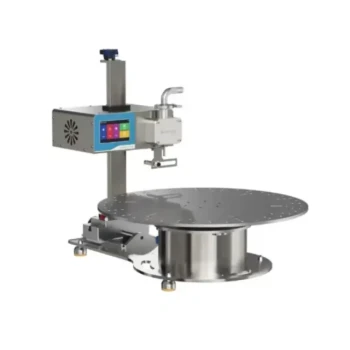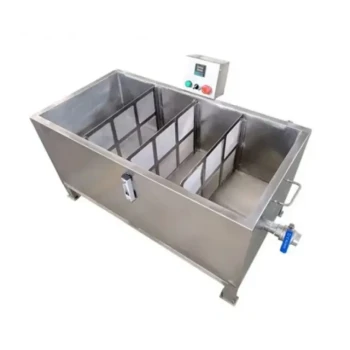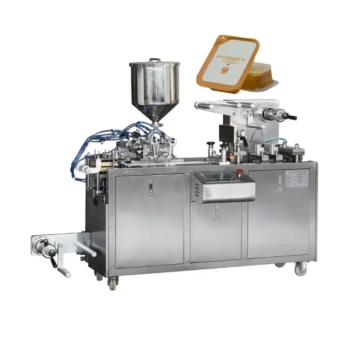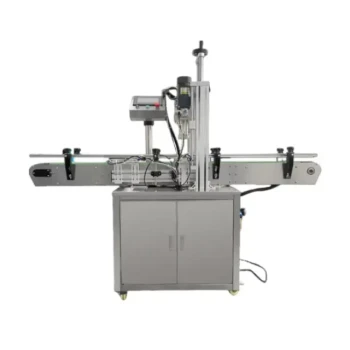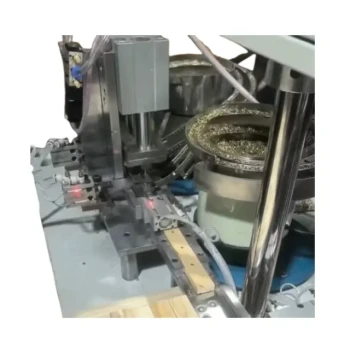To prevent overheating in a honey stick machine, you must focus on three core areas: ensuring unobstructed airflow through clean filters, verifying the operational health of the motor, and maintaining adequate ventilation around the equipment. These elements form the machine's thermal management system, and a failure in any one of them will lead to a rapid increase in temperature.
Overheating is not a random event; it is a clear symptom that the machine can no longer shed the heat it generates. The true solution is not a quick fix but a shift to a proactive maintenance mindset that addresses the root causes of heat buildup: poor airflow, component strain, and environmental factors.

Diagnosing the Root Cause of Overheating
Before you can implement a lasting solution, you must understand why the heat is building up. Overheating is almost always a result of a breakdown in the machine's ability to cool itself, typically stemming from one of three areas.
The Critical Role of Airflow
The primary method for cooling industrial equipment is convection—moving cooler ambient air over hot components. Any obstruction to this process will trap heat.
The most common culprits are clogged air filters. These filters are designed to protect sensitive internal parts from dust, honey residue, and other debris. When they become saturated, they effectively suffocate the machine, preventing cool air from entering.
The Motor as the Heat Source
The main drive motor is the heart of your machine and its single largest source of heat. A motor that is worn, failing, or under excessive strain will generate far more heat than it was designed to.
Listen for changes in the motor's sound, such as grinding or whining. These auditory cues, along with excessive vibration, often indicate bearing failure or other internal issues that increase friction and, consequently, heat.
The Impact of the Operating Environment
Your machine does not operate in a vacuum. The ambient temperature of your production room plays a significant role in its ability to cool down.
If a machine is designed to operate 40°F above the ambient temperature, placing it in a 90°F room will cause it to run much hotter than if it were in a 70°F room. High ambient temperatures reduce the efficiency of the entire cooling system.
A Proactive Maintenance Strategy
Preventing overheating requires a disciplined, preventative approach. By integrating a few key checks into your daily and weekly routines, you can virtually eliminate unexpected thermal shutdowns.
Step 1: Optimize the Environment for Cooling
Ensure the machine has adequate "breathing room." Position it with at least two to three feet of clearance on all sides, especially around air intakes and exhaust vents.
If your production room is consistently warm, consider installing fans to improve air circulation around the equipment or investing in climate control for the space.
Step 2: Implement a Filter Cleaning Schedule
Air filters should be checked daily and cleaned weekly, at a minimum. For environments with high levels of dust or airborne particles, daily cleaning is necessary.
Use compressed air to blow debris out of the filter, always blowing from the clean side to the dirty side. This prevents embedding particles deeper into the filter media. If a filter is oily or cannot be cleaned, replace it.
Step 3: Monitor Motor Health
During operation, periodically place a hand near the motor (without touching it) to gauge its heat output. A motor that is uncomfortably hot to be near is a clear warning sign.
Schedule periodic technical inspections to check motor bearings and electrical connections. A proactive replacement of a motor showing early signs of failure is far less costly than a catastrophic failure during a production run.
Understanding the Trade-offs: Repair vs. Replace
When a component like a motor is causing chronic overheating, you are faced with a critical decision. The choice is not just about the cost of a part, but the total cost of failure.
The Hidden Cost of Downtime
Every hour your machine is down for an unplanned repair is an hour of lost production and lost revenue. A cheap, temporary fix that fails again next week is often more expensive than a permanent solution.
An aging motor that constantly overheats also poses a risk of damaging other components, such as belts, electronics, or the honey itself, turning a single point of failure into a much larger problem.
When to Repair
Simple, low-cost actions are always the first line of defense. Cleaning filters, improving room ventilation, or tightening a loose electrical connection are fundamental "repairs" that should be part of standard maintenance.
When to Replace
If a motor consistently overheats despite clean filters and good ventilation, it is a liability. In this scenario, replacement is almost always the correct business decision. The cost of a new motor is a predictable investment that buys you reliability and peace of mind, whereas attempting to "save" a failing motor is a gamble against future downtime.
Making the Right Choice for Your Operation
Your strategy for managing heat should align directly with your production goals.
- If your primary focus is immediate uptime: Immediately clean all air filters and ensure the machine has adequate ventilation and clearance.
- If your primary focus is long-term reliability: Implement a strict, documented maintenance schedule for filter cleaning and motor inspection.
- If your primary focus is maximizing efficiency: Proactively replace any motor that shows consistent signs of strain or overheating, as this is a leading indicator of future failure.
A consistent maintenance routine is the most effective way to ensure your equipment runs efficiently and without interruption.
Summary Table:
| Maintenance Area | Key Action | Frequency |
|---|---|---|
| Airflow | Clean/Replace Air Filters | Daily Check, Weekly Cleaning |
| Motor Health | Monitor Heat & Sound; Schedule Inspections | During Operation; Periodically |
| Operating Environment | Ensure 2-3 ft. Clearance; Control Room Temperature | Continuous |
Ensure your honey production runs smoothly and efficiently. Overheating leads to costly downtime and potential damage. At HONESTBEE, we supply commercial apiaries and beekeeping equipment distributors with the durable, reliable parts and equipment needed for proactive maintenance. From high-performance motors to replacement filters, our wholesale-focused operations help you maximize uptime and protect your investment.
Don't let a preventable issue halt your production. Contact our team today to discuss your specific needs and keep your honey stick machines running cool.
Visual Guide

Related Products
- Double Nozzle Small Honey Filling Machine Honey Sachet Packing Packaging Equipment
- Fully Automatic Honey Filling Packaging Machine for Processing Line
- Automatic Honey Filling and Filtering Machine for Beekeeping Bottle Filling
- Manual Honey Filling Machine Bottling Machine for Honey
- Semi Automatic Small Honey Bottle Filling Machine Honey Filler
People Also Ask
- What are the characteristics of intermittent-motion honey stick packs? Precision, Flexibility & Affordability
- What factors should be considered when selecting a honey packaging machine? Optimize Your Honey Production Line
- What are the key features of a honey packaging machine? Essential for Quality & Efficiency
- What factors should be considered when choosing a honey packaging machine? Optimize Your Production Line
- What are the benefits of using a honey filler? Boost Bottling Speed, Consistency & Brand Appeal






